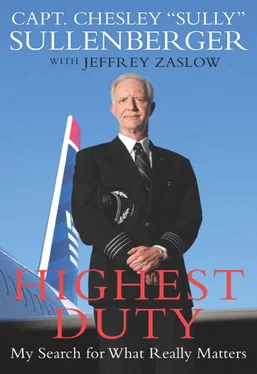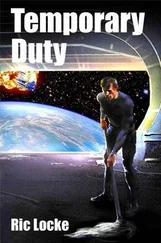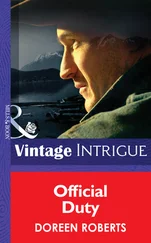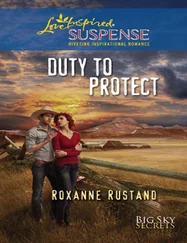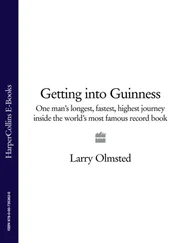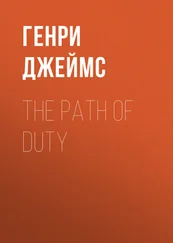I had packed for this four-day trip the same way I pack for every four-day trip. I never want to bring more than necessary. I wore my captain’s uniform—jacket and pants—and in my pilot’s “roll-aboard” carry-on, brought three clean shirts, three pairs of underwear, three pairs of socks, my shaving kit, running shoes, an umbrella, an iPod, my laptop to check e-mail, and four books to read. I also had my American Express SkyGuide , which lists the complete North American flight schedule for all airlines. In a shirt pocket I had a US Airways trip sheet, with a full itinerary for the four days. Since my travels would take me to Pittsburgh and New York, where the weather would be cold and possibly snowy, I also brought a long winter overcoat, gloves, and a knit cap.
I enjoy listening to music on an iPod when I am in a city for an overnight. I always try to make a point of leaving the hotel to go for a walk, with music in my ears. Lately, I’ve been partial to Natalie Merchant, Green Day, the Killers, and Evanescence. I also find myself listening again and again to the works of Fritz Kreisler, the legendary Austrian violinist. He composed and recorded Liebesleid (Love’s Sorrow) and Liebesfreud (Love’s Joy), which is an inspiring sound track on a walk or run around a city, lost in your own thoughts.
In recent years, I’ve also been spending more time on the road focused on my future up the road. I am fifty-eight years old, and I face mandatory retirement from the cockpit when I turn sixty-five. What will I do then? Since September 11, 2001, the airline industry has been ailing, and as a result of cutbacks, I’ve lost 40 percent of my salary. Meanwhile, the US Airways pension I thought I could count on was terminated in 2004, and a government-backed replacement plan is a very weak substitute. As a result, I’ve lost more than two-thirds of my pension. My story is a familiar one across the airline industry.
Trying to earn money elsewhere, I’ve bought some real estate over the years, with mixed results. I own a property in Northern California that used to house a Jiffy Lube oil-change franchise. The operation didn’t renew its lease, however, and I’ve been unable to find a new tenant. So as I sat on that flight to Charlotte, I went over some of those details in my head.
About a year ago, I also started my own side business, a consulting company called Safety Reliability Methods, Inc. It seemed like the right fit for me as my flying career winds down. Long before the landing in the Hudson, I’d been passionately involved in matters of air safety, dating back to my days as an Air Force fighter pilot. And so I brought three books on this four-day trip that were related to issues I want to address as a consultant.
I’ve been slowly building my firm, designed to help those in other occupations benefit from the airline industry’s tactical and strategic approaches to safety. Pilots have extensive checklists that we follow in the cockpit. My firm encourages initiatives, such as those now under way in medicine, that mirror pilots’ checklists. For instance, the World Health Organization now suggests the use of surgical safety checklists, requiring hospital teams to make certain that a patient’s known allergies are checked, and instruments, needles, and sponges are counted to make sure none are left inside a patient.
I think commercial aviation is ultrasafe. Given the number of passengers we deliver safely to their destinations each day, and the relatively low risk associated with flying, our record so far is commendable. But airline companies must remain diligent, especially in the face of all the economic cutbacks plaguing the industry, or our good record could be compromised.
One of the books I had with me on that trip was Just Culture by Sidney Dekker, borrowed from my local library. Dekker writes about the balancing act between accountability and learning when it comes to people reporting safety issues. I have long believed that we can make a company culture, government, or community safer by encouraging people to report their own mistakes and safety deficiencies. So this book was a confirmation of my own study of these issues and my years of experience as a pilot.
As I sat in my middle seat on the way to Charlotte, I found myself reading and taking notes for my consulting business. I don’t recall trading too many words with the passengers on either side of me.
When I’m a passenger in the back of a plane, though I’m reading or trying to nap or worrying about the shuttered Jiffy Lube, I still have a general awareness of how the flight is going and what the pilots are doing. I can feel the movements of the airplane. Most of my fellow passengers are engaged with their own books or are tapping away on their laptops, and they don’t realize subtle things. But even when I’m not trying, I can tell when the plane is climbing or descending, or when the pilots are changing the flap setting or the engine thrust. For pilots, that general awareness comes with the territory.
The flight I was on had left San Francisco at 7:30 A.M. Pacific time, and arrived in Charlotte at 3:15 P.M. Eastern time. I got something to eat at the airport in Charlotte and then made my way to the gate for my first piloted flight of the four-day trip. I’d be going right back to San Francisco, flying an Airbus A321, carrying about 180 passengers.
Once I got to the gate, I smiled at some of the passengers and greeted the three flight attendants—Sheila Dail, Donna Dent, and Doreen Welsh. I had flown with Sheila and Donna before. I’m guessing I had shared trips with Doreen, too, some years ago, when we were both based in Pittsburgh. Because US Airways hasn’t hired new flight attendants in years, all our crews are veterans. Doreen, now fifty-eight, joined the company in 1970 when it was Allegheny Airlines. That’s thirty-eight years of experience. Both Sheila, fifty-seven, and Donna, fifty-one, have more than twenty-six years with the airline.
At the gate, I also shook hands with Jeff Skiles, the first officer who’d be flying with me. He and I had never met before, so we introduced ourselves. Along with Sheila, Donna, and Doreen, we’d be a team for the next four days.
Despite all my years as a pilot, it’s common for me to have a first officer or flight attendants I’ve never met. Even after some serious downsizing, US Airways still has about 5,000 pilots and 6,600 flight attendants. It’s impossible to know them all.
It is standard at our airline for a crew to have a brief meeting together at the start of a trip. It’s vital to make individuals feel like a team quickly so that they can work almost as well together on the first flight as they naturally would after having flown several flights together. So before the passengers boarded we stood—Jeff, Sheila, Donna, Doreen, and I—in the aisle of the empty first-class cabin for a couple minutes, and I said a few words.
As the captain, it’s up to me to set the tone. I want to be approachable. I asked the flight attendants to be my eyes and ears during the days ahead, to tell me about anything important that I couldn’t observe from the cockpit. I asked them to let me know what they needed to do their jobs—catering, cleaning, whatever—and told them I’d try to help. I wanted them to know I was looking out for them. “I can’t get you your retirement plans back, but I can do a few things that will make your quality of life better. One of them is, when we arrive at our destination on the last flight of a day, I’ll call the hotel and make sure that they’ve sent the van so we’re not waiting for twenty minutes.”
Jeff, forty-nine years old, was very friendly from the moment we said hello, and in the days to follow I’d learn more about him. Like me, he had earned his private pilot license at sixteen. But he came from an aviation family; both his parents were also pilots. He had worked for US Airways for twenty-three years, with twenty thousand flight hours, and had risen to be a captain. But due to cutbacks in flights and planes, and the effect on the pilots’ seniority list, he was now flying as a first officer. I have twenty-nine years under my belt, so these days, I’m among the most senior of pilots at my airline.
Читать дальше
